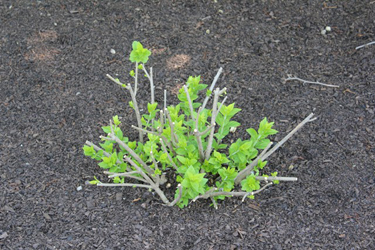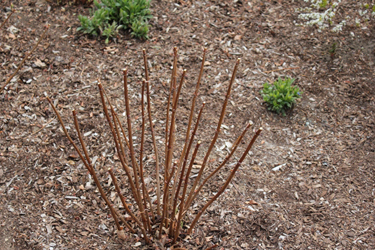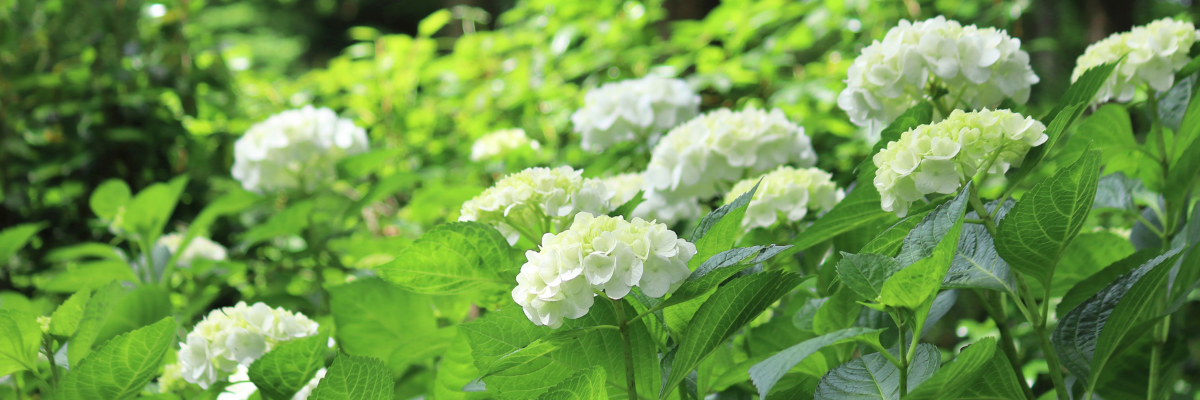Written By: Lorraine Ballato
Author of: Success With Hydrangeas: A Gardener’s Guide
Gardeners are waking up all over the country. How do I know this? I am seeing all sorts of garden-related info flash across my devices, from Yahoo News to horticultural sites, to personal blogs. But what gets most of my attention these days is all of the bad info about hydrangeas. So let’s do some hydrangea myth-busting to get you and your plants off on the right foot.
Myth #1: All hydrangeas need pruning
Fact: Pruning depends on the type of hydrangea
If you are thinking about starting to prune your hydrangeas, be aware that the rules are different for each different type of hydrangea.
- Panicle and woodland hydrangea — The only ones you should think about cutting back now are the panicle hydrangeas like ‘Limelight’ and the woodland hydrangeas like ‘Annabelle’. If you must cut, take out every third stem of your woodland plants. Cut the rest of the stems down by about one-third (if at all) to leave a framework to support the flower-bearing stems.

NOThese stems have been cut too short. Do not cut more than one-third of the stem height. |

YESThis is what Incrediball® looked like after a spring “haircut”. The stems are long enough to hold up new flowers (especially after rainy weather) |

Your panicle hydrangeas like Little Hottie®, pictured above, will benefit from being cut by about a third.
- Bigleaf, mountain, oakleaf and climbing hydrangeas — Don’t prune until you see those little heads of broccoli that tell you where the flowers will be. Any premature cutting you do now risks losing those flowers. These hydrangeas require very little pruning and bloom on growth from current and previous years, thus too much pruning removes potential blooms.
Myth #2: Home Remedies Added To Your Soil Can Change Flower Color
Fact: It’s Not That Easy to Change the Color of Hydrangeas
Thinking of using rusty nails, pine needles, or used coffee grounds to change your soil? Don’t bother unless you want to waste your time. None of them releases anything that will help your plants. Spreading pine needles do nothing to acidify your soil, but they are a good, non-toxic, and sustainable mulch. The acid content in used coffee grounds is negligible, however, they make great mulch. Refrain from applying fresh, unused grounds as their acid might be too much for what your plant needs.
If you want to change the color of your flowers, first be certain that a color change is possible. Only two hydrangea types undergo significant color changes depending on the soil: Bigleaf and the less common Mountain hydrangeas. Then get your soil tested to verify what it does and doesn’t need for the best plant performance.
If that test shows the pH is above 6.5 and your plant can change color from pink to blue, add aluminum sulfate to the soil. This will lower the pH so the plant can take up the aluminum which is what turns the flowers blue. Know that it takes the plant time to absorb and move these nutrients. So your best bet is to do this in the fall to allow the plant the time it needs to work this magic. Also, know that your soil will always revert to its natural state so this is not a “one and done” chore.
Myth #3: 10-10-10 fertilizer is the best for hydrangeas
Fact: Shrub or rose fertilizer is best for hydrangeas
So what kind of fertilizer should you use on your hydrangeas? Please no 10-10-10 or other similar products with equal amounts of nitrogen, phosphorous, and potassium. It’s overkill. That’s because no plant uses nutrients in the same amount. Further, with the exception of nitrogen, the other nutrients take much longer to be absorbed. So you waste your time and money. But more importantly, using too much of any fertilizer component contributes to polluting runoff.
Your best bet is a granular fertilizer formulated for shrubs or one that is a slow-release product. Rose food is ideal. For reblooming hydrangeas, it is recommended to fertilizer two times a year, in the spring and summer to help the later blooms.

Myth #4: Hydrangeas need lots of water
Fact: You can overwater your hydrangeas
The last myth to dispel is that hydrangeas need a lot of water. Simply not true. Yes, they can droop when they are exposed to the sun (which they need), and too much water stress will negatively impact flower production. But as soon as the sun is off them, they reach back into the surrounding soil and recover.
The plant in the above photo is exposed to the morning sun leading to its thirsty look at 1.05 pm. But by 6.10 pm, it has recovered with no irrigation. That’s what you want to see.
If your plants don’t perk up after they have been out of the sun for several hours, then by all means give them a drink. But then you must also determine why they aren’t recovering. Do they need mulch? Is your soil too sandy and drains too well? Compost can fix that. Or maybe you are in a drought situation. So watch your plant, get a rain gauge, maybe change your watering habits, learn, and adjust.
What are you risking with too much water? For one, you can smother the roots which will kill the plant. Oakleaf hydrangeas are especially susceptible to that. Or you can encourage your plant to make more leaves instead of flowers. Hydrangeas love to do that as it is an easier task for the plant.


